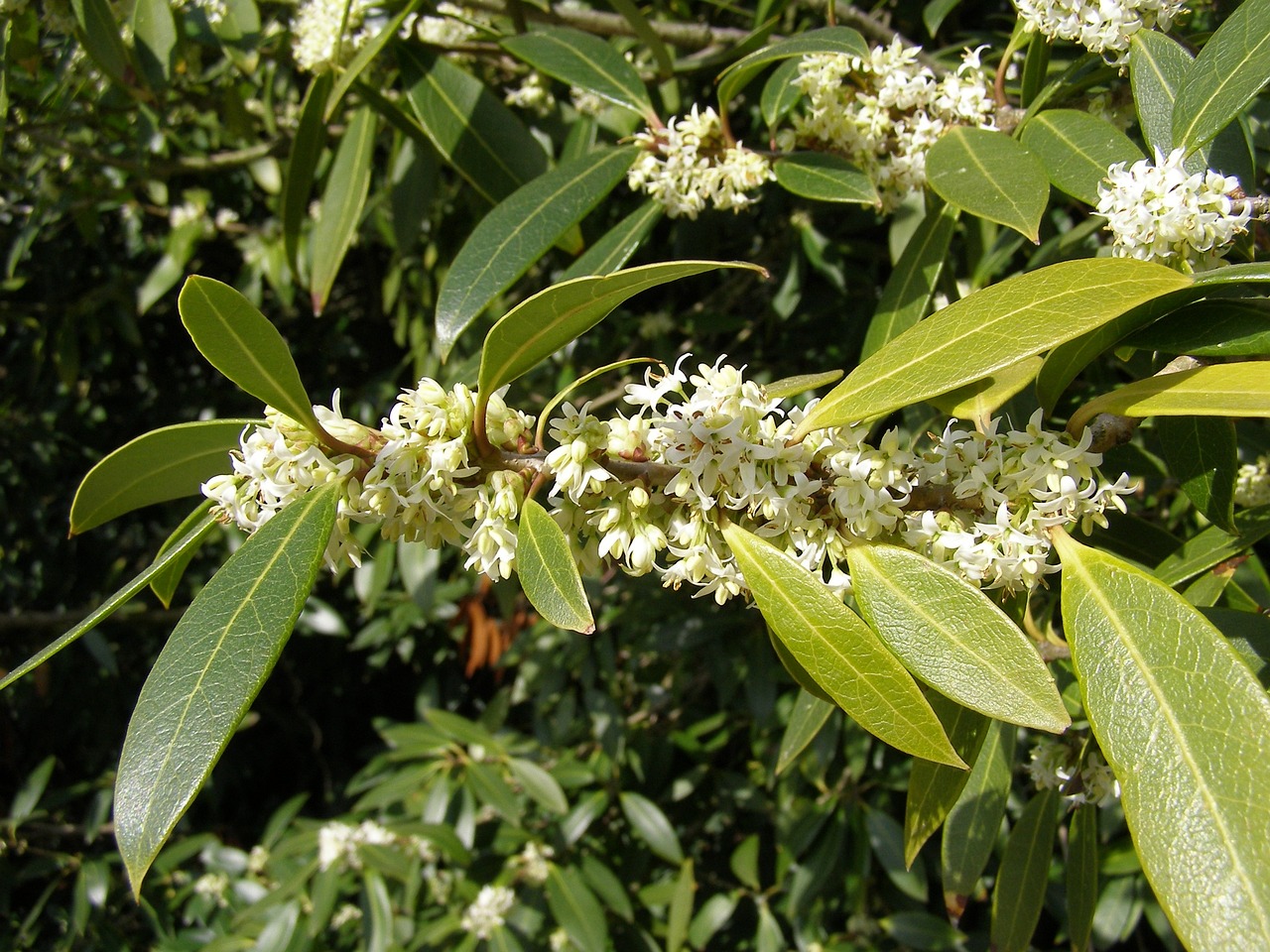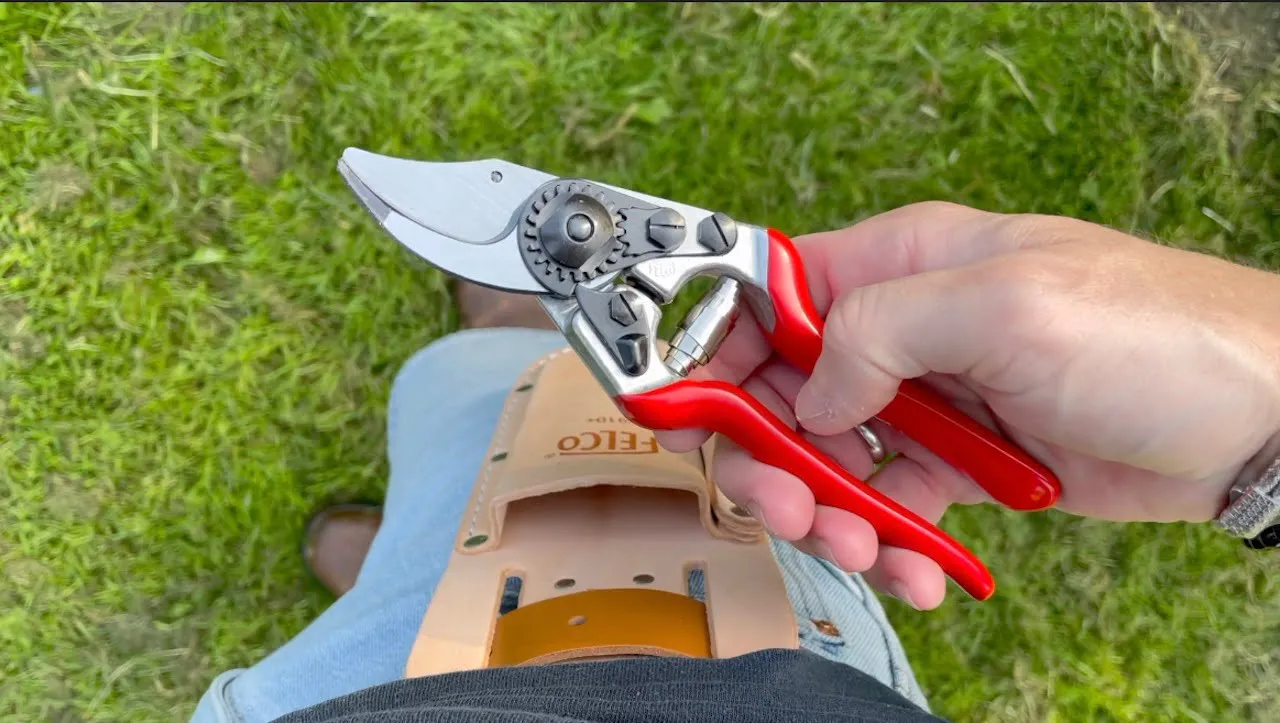Hi @kev-price-75
Thanks for your question. I get a lot of people asking 'can I hard prune my osmanthus?' and the answer is YES! However there are a few key tricks you need to be aware of as some new gardeners take hard pruning to mean decimating the shrub or tree!
Osmanthus, also known as false holly, is a tough and slow-growing evergreen shrub prized for its glossy foliage and fragrant flowers. While it doesn’t need frequent pruning, there are times when a hard prune is necessary—whether to reshape an overgrown plant or rejuvenate an old, leggy specimen. The challenge? Osmanthus doesn’t always bounce back if pruned incorrectly. Done the right way, however, it will thrive and reward you with fresh, dense growth.

For your Variegatred Osmanthus I'd recommend just takingback 50% of the growth to an outward facing bud or any ridge on the main trunk or stems which would indicate a bud break. Let me explain a bit more about how to prune Osmanthus for clarity. Kev.
When to Hard Prune Osmanthus
The best time for a hard prune is in early to mid-spring, just as the plant is coming into active growth. This gives it the entire growing season to recover and produce new shoots. Avoid pruning in late autumn or winter, as the plant will struggle to regenerate and may suffer from frost damage.
If you’re unsure about doing a drastic prune all at once, you can spread the process over two or three years to reduce stress on the plant.
How to Hard Prune Osmanthus Without Harming It
Step 1: Assess the Shape and Size
Before you start hacking away, step back and take a good look at your Osmanthus. Identify the areas that need reducing, focusing on any leggy, overcrowded, or damaged branches. The goal is to create a balanced, healthy structure.
Step 2: Start with Dead, Diseased, or Crossing Branches
Using clean, sharp secateurs or loppers, remove any dead, damaged, or crossing branches first. This improves air circulation and helps prevent disease, which is especially important when making deep cuts.
Step 3: Reduce the Overall Size Gradually
Osmanthus responds best to gradual hard pruning, rather than being cut back all at once. The safest method is to remove no more than one-third of the plant’s total height and width in a single season. This allows the shrub to recover without going into shock.
If you need to reduce its size drastically, cut it back by a third this year, then repeat the process next spring. This staged approach encourages steady regrowth and prevents dieback.
Step 4: Cut Above a Leaf Node or Side Shoot
When making cuts, always trim just above a leaf node or a healthy side shoot. This encourages bushy regrowth rather than leaving bare, unproductive stems. Avoid cutting into old, woody growth with no leaves, as Osmanthus struggles to regrow from older wood.
Step 5: Feed and Mulch for Recovery
After pruning, give your Osmanthus a boost by applying a balanced fertilizer or organic compost around the base. A good mulch layer will help retain moisture and provide nutrients for regrowth. Keep the soil consistently moist but not waterlogged to support recovery.

What to Expect After Hard Pruning
A hard-pruned Osmanthus will take time to regrow, but within a few months, you should see new shoots emerging from the cut stems. Full recovery can take up to a year, depending on how much you pruned. Patience is key—resist the urge to prune again too soon, as the plant needs time to rebuild its strength.
Do let us know how you get on and post some pictures for us!
All the best
Lee Garden Ninja
Hi @kev-price-75
Thanks for your question. I get a lot of people asking 'can I hard prune my osmanthus?' and the answer is YES! However there are a few key tricks you need to be aware of as some new gardeners take hard pruning to mean decimating the shrub or tree!
Osmanthus, also known as false holly, is a tough and slow-growing evergreen shrub prized for its glossy foliage and fragrant flowers. While it doesn’t need frequent pruning, there are times when a hard prune is necessary—whether to reshape an overgrown plant or rejuvenate an old, leggy specimen. The challenge? Osmanthus doesn’t always bounce back if pruned incorrectly. Done the right way, however, it will thrive and reward you with fresh, dense growth.

For your Variegatred Osmanthus I'd recommend just takingback 50% of the growth to an outward facing bud or any ridge on the main trunk or stems which would indicate a bud break. Let me explain a bit more about how to prune Osmanthus for clarity. Kev.
When to Hard Prune Osmanthus
The best time for a hard prune is in early to mid-spring, just as the plant is coming into active growth. This gives it the entire growing season to recover and produce new shoots. Avoid pruning in late autumn or winter, as the plant will struggle to regenerate and may suffer from frost damage.
If you’re unsure about doing a drastic prune all at once, you can spread the process over two or three years to reduce stress on the plant.
How to Hard Prune Osmanthus Without Harming It
Step 1: Assess the Shape and Size
Before you start hacking away, step back and take a good look at your Osmanthus. Identify the areas that need reducing, focusing on any leggy, overcrowded, or damaged branches. The goal is to create a balanced, healthy structure.
Step 2: Start with Dead, Diseased, or Crossing Branches
Using clean, sharp secateurs or loppers, remove any dead, damaged, or crossing branches first. This improves air circulation and helps prevent disease, which is especially important when making deep cuts.
Step 3: Reduce the Overall Size Gradually
Osmanthus responds best to gradual hard pruning, rather than being cut back all at once. The safest method is to remove no more than one-third of the plant’s total height and width in a single season. This allows the shrub to recover without going into shock.
If you need to reduce its size drastically, cut it back by a third this year, then repeat the process next spring. This staged approach encourages steady regrowth and prevents dieback.
Step 4: Cut Above a Leaf Node or Side Shoot
When making cuts, always trim just above a leaf node or a healthy side shoot. This encourages bushy regrowth rather than leaving bare, unproductive stems. Avoid cutting into old, woody growth with no leaves, as Osmanthus struggles to regrow from older wood.
Step 5: Feed and Mulch for Recovery
After pruning, give your Osmanthus a boost by applying a balanced fertilizer or organic compost around the base. A good mulch layer will help retain moisture and provide nutrients for regrowth. Keep the soil consistently moist but not waterlogged to support recovery.

What to Expect After Hard Pruning
A hard-pruned Osmanthus will take time to regrow, but within a few months, you should see new shoots emerging from the cut stems. Full recovery can take up to a year, depending on how much you pruned. Patience is key—resist the urge to prune again too soon, as the plant needs time to rebuild its strength.
Do let us know how you get on and post some pictures for us!
All the best
Lee Garden Ninja
 Lee Burkhill: Award Winning Designer & BBC 1's Garden Rescue Presenters Official Blog
Lee Burkhill: Award Winning Designer & BBC 1's Garden Rescue Presenters Official Blog



